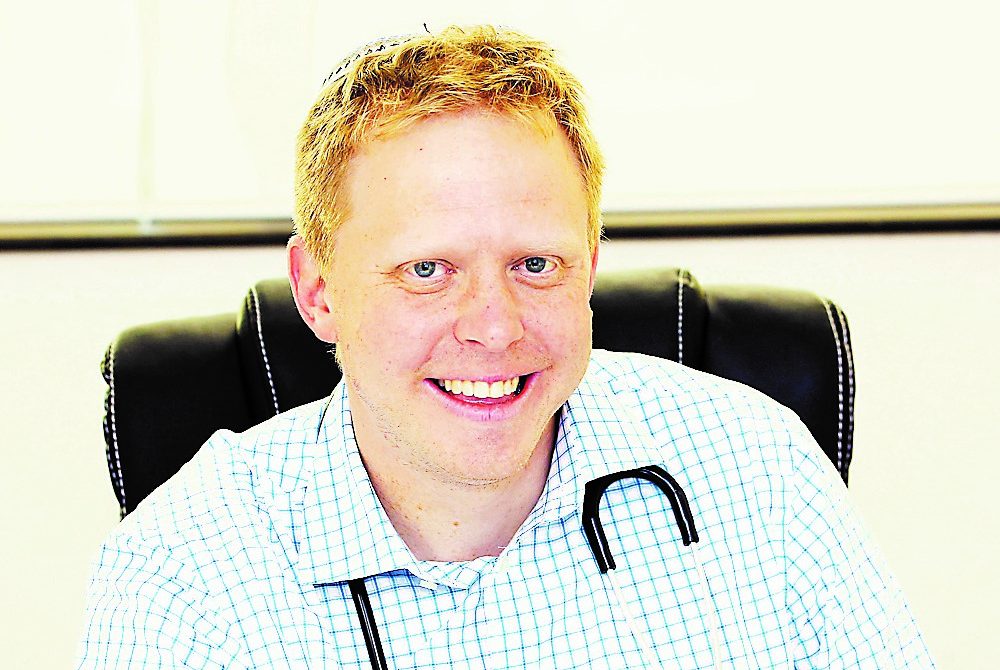
News

We’re not out of the woods, but there are some spring shoots
A palpable sense of anticipation has begun to permeate our homes. This isn’t uncommon for the latter part of August, for the renewal of spring and a new Jewish year awaits us.
However, this year, the focus of spring is on whether normal life will slowly begin to blossom. Schools have reopened this week, and we eagerly await the resumption of shul services.
The 1918 Spanish flu pandemic found itself in the same position in the autumn of 1918. We ought to learn valuable lessons from that chapter in history: history repeats itself.
The 1918 influenza pandemic, or Spanish flu, was the most severe pandemic in history. A total of 500 million people, or one third of the world’s population, became infected, and at least 50 million people died.
The pandemic coincided with the end of World War I, and it quickly became global due to the deployment of American troops across the world. However, interestingly, this initial spread didn’t cause the majority of deaths. The virus initially almost fully subsided, and then a second wave in the autumn of 1918 resulted in an exponential spike in infections and deaths.
There is debate as to the precise mechanism that led to the second wave in 1918. The city of Philadelphia decided to proceed with a war parade, and 1 000 unexpected deaths followed in just 10 days. The Royal College of Physicians at the end of the first wave announced that Spanish flu was no more threatening than the still well-remembered Russian flu of 1889, which lead to the relaxation of cautionary behaviour.
Even the British Medical Journal accepted that “overcrowding on transport was necessary to aid the war effort and should be quietly borne”. There are numerous reports about quarantine measures that were lifted at the end of the first wave. Their accuracy is still the subject of debate.
The common thread in the contributory causes for the second wave of the Spanish flu pandemic is clear: life needed to move on, and society opened up. Does this sound familiar?
Even though we have waited for and now eagerly embrace this phase of the relaxation of restrictions, it’s important that we follow basic principles to ensure that this time is safe.
The South African population is far from having herd immunity. Although the strides made in vaccine development are encouraging – with seven vaccines already in trial including three trials in South Africa, one of which is linked to Oxford University and is in phase 3 – the day of receiving a vaccine in the shoulder is still a little distant for the man on the street.
But, in contrast to 1918, this time we understand viruses and their spread much better. It has been unequivocally proven that physical barriers like masks significantly prevent spread. Proper social distancing reliably stops transmission. We have efficacious alcohols that kill coronavirus in contrast to the potash and salt used in 1918 that didn’t do much. These simple principles may seem hackneyed, but they work, and need to remain the ongoing focus.
Are we set for a second wave of infections of COVID-19, given that a similar picture is unfolding in Israel and arguably even the United States? Not necessarily.
Professor Salim Abdool Karim, the chairperson of the South African Presidential Advisory Committee on COVID-19, recently addressed this question at a Zoom meeting with the Gauteng GP Collaboration. He made it clear that although we’re “not out of the woods”, cases may have already peaked in Gauteng and even nationally.
He stressed, though, that to prevent a second wave we ought to be vigilant with the behavioural and societal measures we have implemented as South Africans already which have kept the morbidity and mortality of COVID-19 down.
Instead of questioning whether we are reopening our institutions too early, we need to question whether we are each as committed to the principles of preventing infection as we would have been in April or May on a daily basis.
Businesses are in disarray; extended family relationships are strained; and individuals are suffering from isolation. Just like after the first wave of the Spanish flu in 1918, there is no doubt that the time is now to water the garden and let the spring blossoms begin to sprout.
We will hopefully have a new lease on slowly re-establishing the lifestyles we had. The difference this time is that we will come equipped with lessons from the past, and with basic preventative measures that we must continuously and uncompromisingly implement until the pandemic is finally over.
- Dr Daniel Israel is a family practitioner in Johannesburg










